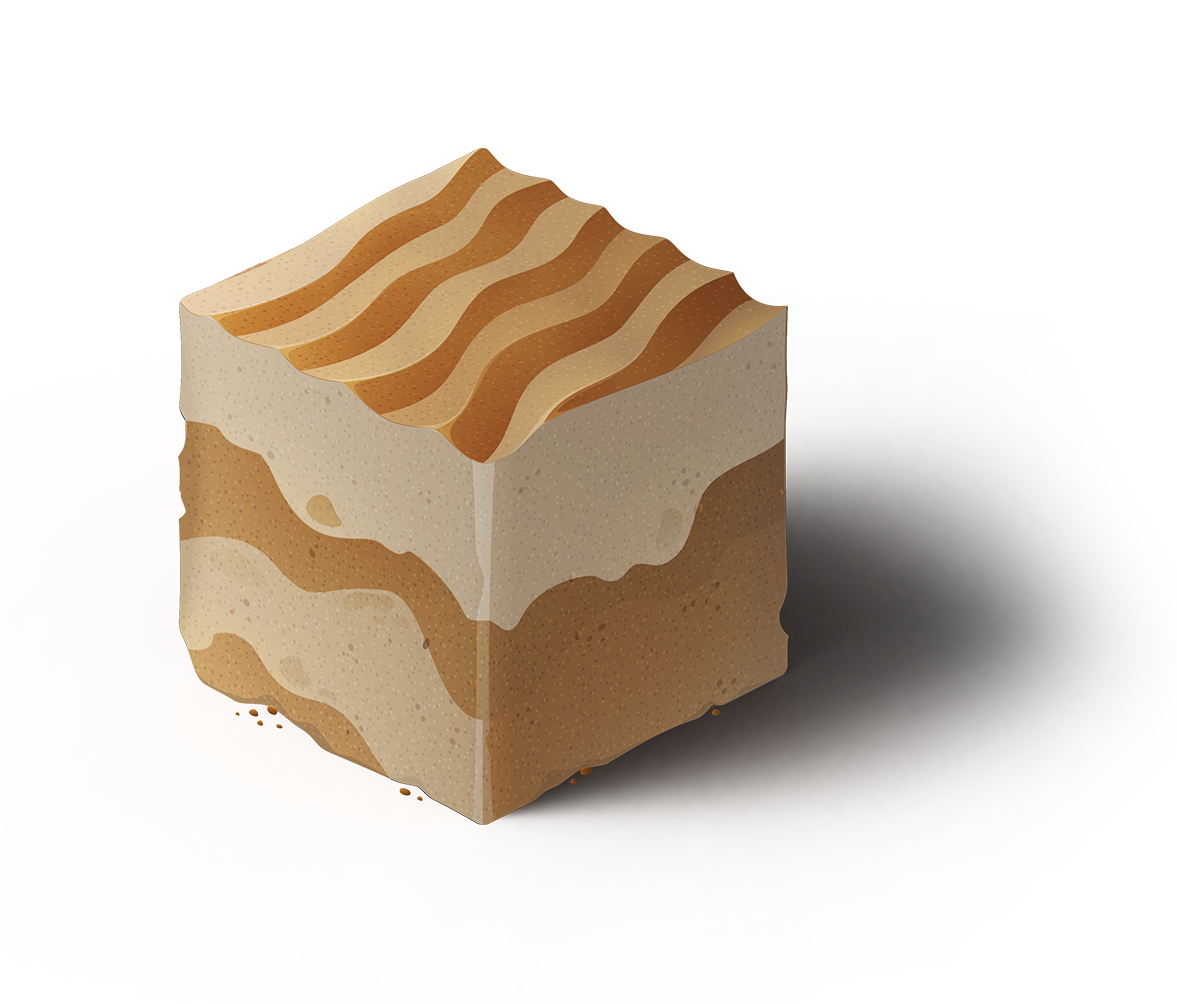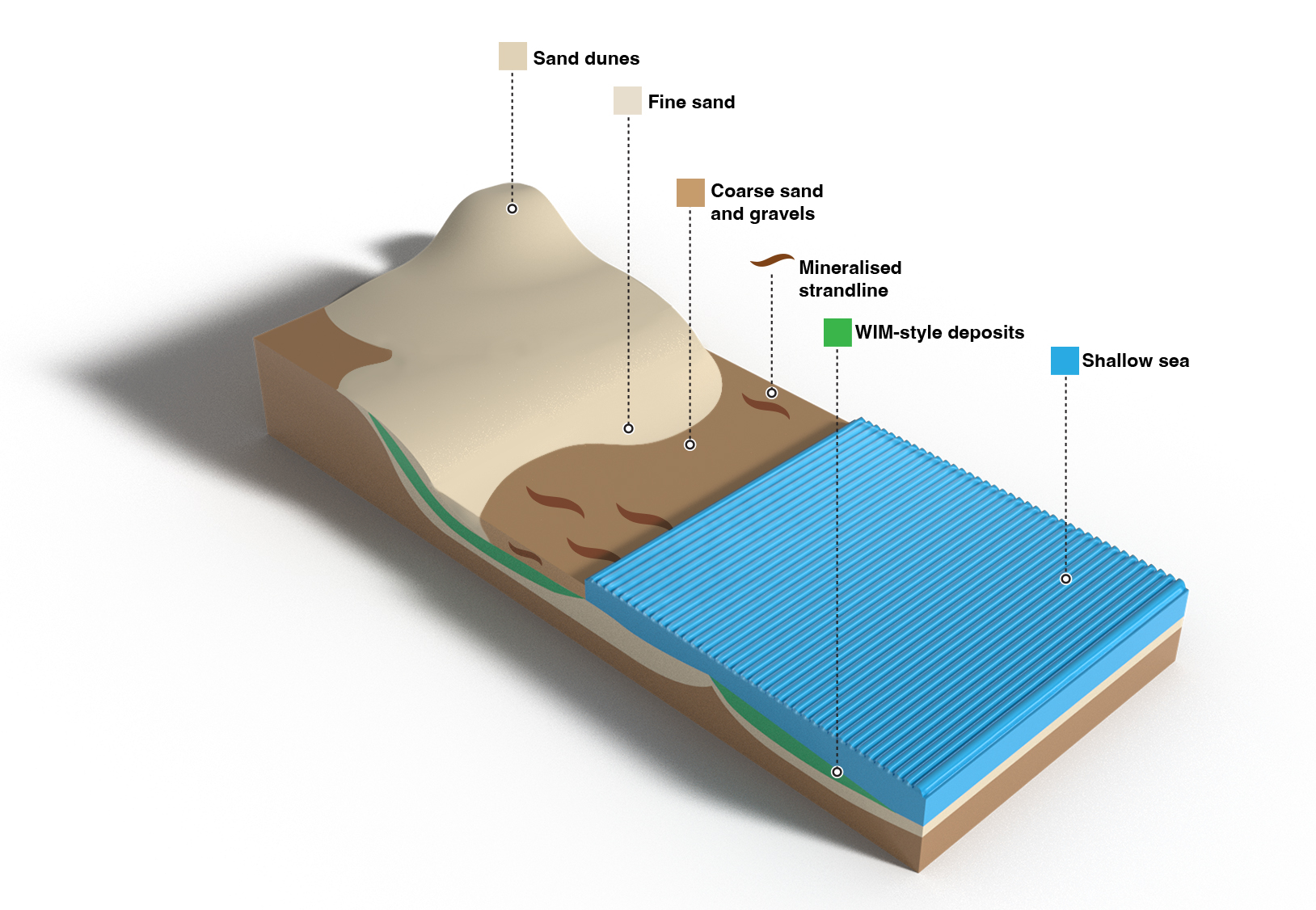What are mineral sands?
Geology
Mineral sands are a group of minerals such as ilmenite, rutile and zircon commonly found together as coarse and fine grain sands. Originally formed as crystals in igneous rocks such as granite or basalt and some metamorphic rocks, these minerals were eroded by wind, rain and rivers over millions of years. The resulting grains washed down to the sea to become part of the coastal sands of ancient beaches. Tidal movements washed away the lighter mineral sand grains, such as quartz sands, leaving the heavier mineral sands on beachlines. As the world's oceans subsided these deposits were left exposed which is
why they are now often found more than 100 kilometres from today's beaches. This natural weathering process formed the two main types of mineral sands deposits
that exist today. Coarser sands that remained on shorelines due to their larger size are often referred to as strandline deposits whereas finer mineral sands which typically settled in the basin of the ocean are referred to as 'WIM-style' (originally Wimmera Industrial Minerals) or 'offshore' deposits. WIM-style deposits are generally larger overall than strandline deposits. The Murray Basin (covering parts of Victoria, New South Wales and South Australia) demonstrates this weathering process. Home to an ancient sea during the Cenozoic Era
(up to 66 millions years ago), large deposits of heavy mineral sands formed when heavy minerals entered the marine environment of the Murray Basin through river systems.
Mineral sands deposits are also found in the Eucla Basin (South Australia and Western Australia) and the Perth and Canning basins (Western Australia). Deposits have also been identified in Tasmania, Queensland and the Northern Territory. Western Australia is already a world leader in the production of ilmenite, rutile and zircon, supplying mineral sands to 35 countries.1 In 2016-17, Western Australia's mineral sands sector sold almost 1.4 million tonnes of material valued at around $554 million.2
- Department of Mines, Industry Regulation and Safety, Mineral sands, Government of Western Australia, viewed 6 February 2019 (http://www.dmp.wa.gov.au/Investors/Mineral-sands-1473.aspx).
- ibid.
History of Mineral Sands in Victoria
Mineral sands in Victoria Heavy Mineral Sands (HMS) were first reported in the Murray Basin in Victoria in 1967. A concerted and broad ranging campaign by CRA Exploration Pty Ltd (now Rio Tinto) and other companies during the 1980s and 1990s established the Murray Basin as a major HMS province. HMS are placer deposits in which high specific gravity minerals are concentrated. In Victoria, the valuable heavy minerals (VHM) fraction of mineral sands deposits includes zircon, rutile, leucoxene and ilmenite; monazite is also present. Deposit formation HMS accumulated in the near-shore environment of the Murray Basin sea, primarily as strandline deposits (where HMS tend to concentrate in a near-shore, low-energy zone) and WIM-style off-shore deposits which formed in deeper water. WIM deposits predate strandline deposits. Victoria hosts two styles of mineral sands deposits: strandline and WIM style. Strandline deposits are characterised by their relatively linear geometry and WIM-style deposits by their sheet-like geometry. Strandline deposits tend to be coarse grained (>100 µm grain size), relatively rich, with grades in the range of 5-20% HMS, but are relatively low tonnage. WIM-style deposits tend to be fine grained




